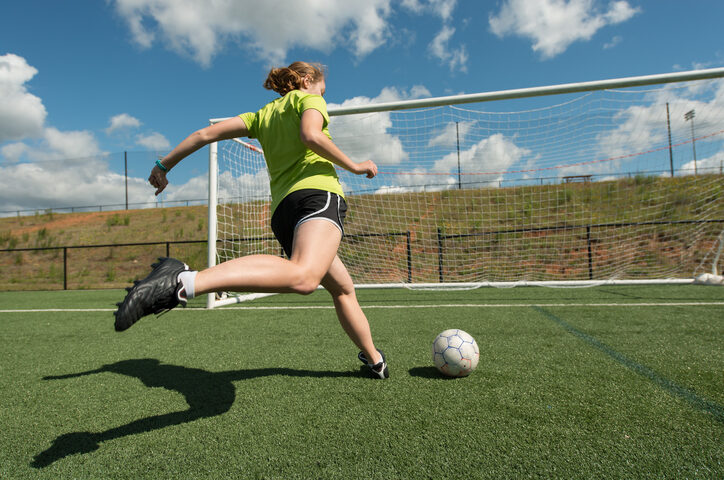This fall, young athletes will line up on soccer fields with new cleats, uniforms, teammates, and coaches. But for many, fall isn’t the beginning of a season — it’s merely the continuation of playing youth soccer year-round. The sports epidemic of specializing in one sport too early (under the age of 12), has been widely publicized. However, these days it’s more than likely that you and your young athlete spent most of your summer at travel soccer tournaments, team camps, and soccer preseason. I know, I’ve been there with you.
I’m a mother of four boys and a travel youth soccer coach for my 10-year-old. And I very often grapple with my reality of raising a soccer family and my professional responsibility as a pediatric sports medicine physical therapist. When I integrate my current daily life with my former life, as a collegiate soccer player, I totally understand the perspective of the player.
Soccer doesn’t feel excessive when you’re spending time with teammates in between games at a tournament or at team camp. But it can seem overwhelming when you’re being carried off the field with an injury. Or you’re working your way back from an anterior cruciate ligament (ACL) tear to try out for your high school team.
And with this in mind, I ask you and your young athlete to think about this: “Am I ready for this season?”
The Risks of Too Much Youth Soccer
Many youth athletes have spent countless hours perfecting their footwork, speed, and multiple shots on goal to prepare for the season. But, unlike their professional soccer athlete counterparts, our athletes are still growing and developing daily.
This makes young soccer players more susceptible to injury, especially around their growth plates. Having a pulled hamstring, groin muscle, or hip flexor is not common in youth athletes. If they have a muscular pain, they likely have at least irritated the bone that it attaches to, causing something called an “apophysitis” (an overuse injury of the growth plate).
These injuries should be attended to carefully and evaluated fully by a medical provider, rather than played through. If your athlete is limping after or while playing, play needs to stop.
How to Reduce the Risk of Soccer Injuries
The risk of a youth soccer injury can be prevented.
Warming Up Before Play
Injury prevention programs like FIFA 11+ focus on a complete, dynamic warm-up before training and before play. This type of warm-up program is especially crucial for kids who are still growing.
Return to Play
As a physical therapist, my immediate concern is a child’s physical readiness of returning to play. If your child was recovering from an injury during the summer season — whether it’s an ankle sprain, an ACL surgery, or a concussion — rehabilitation is most important. Rushing the last few stages of recovery to return to play “in your season” is just asking for another injury. Or, it could mean an unsuccessful season, playing at less than 100 percent.
So, work with your child’s physical therapist and sports medicine team to make sure not only the bare minimum is met, but that your athlete is better than before the injury. When kids increase their complete athletic performance during rehabilitation, they’ll be a stronger player upon their return.
Mental Readiness
The mother in me and the former athlete think about readiness in another form too — psychologically. We know that over-training, specializing in one sport, and the hormonal changes in youth athletes all take both a physical and mental toll.
Signs of burnout in our youth athletes are important to listen to and address. Losing interest in their team/sport, making negative comments about their performance, and having sleep disturbances aren’t always related to being an adolescent. There’s even research to support that athletes experiencing burnout are also 70-93 percent more likely to have an injury.
When you step out onto the fields this fall:
-
Remember that “success doesn’t happen overnight.”
-
Be the parent on the sideline and not the coach.
-
Be positive about your child’s performance and listen closely when they’re complaining.
-
Focus on what other areas outside of sports are giving them success and helping them to develop as a well-rounded person.
We want our children to reflect back someday on their sports experience and know how it helped create their character as an adult.
Learn More
- Nemours Center for Sports Medicine
- Safety Tips: Soccer (Nemours’ KidsHealth.org)
- Sports Medicine Center (Nemours’ KidsHealth.org)
